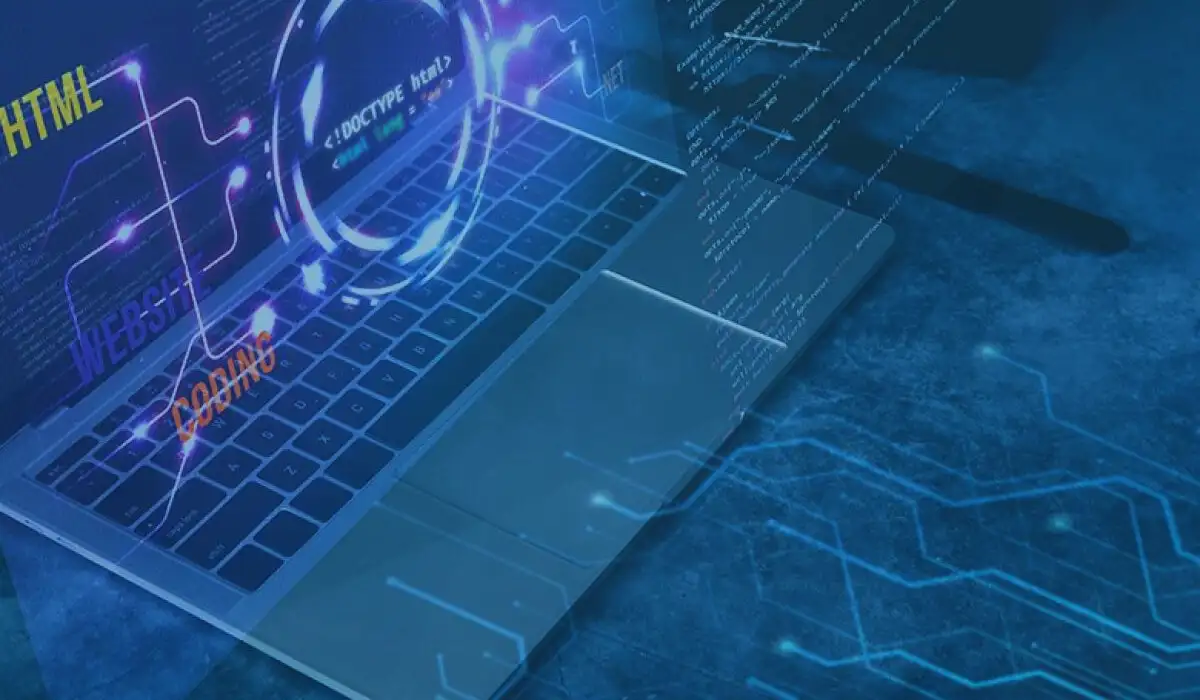If you are an ardent follower of tech-related news, you might have heard the term ‘blockchain technology’. Touted to be the invention of the century, blockchain is expected to revolutionize transactions and data transfers.
However, if you search the internet to understand what blockchain technology is, you will be greeted with hundreds of articles, but with complex terms and jargon. So, it is quite imperative to explain what blockchain technology is, for laymen to understand.
You might also have heard the term ‘Bitcoin’ synonymous with blockchain technology. What do these two have in common? How does blockchain technology work? What are its features and uses?
So, if you are new to such advanced technology, this article will get you up to speed. Feel free to go through this reader-friendly article to gain a solid foundation about blockchain and get to know how you can use this technology for your
What Is Blockchain Technology?

Blockchain is a decentralized, digitally distributed public ledger that exists in a peer-to-peer network. To explain in simpler terms, Blockchain is an advanced database system that allows transparent sharing of information.
The blockchain stores data as blocks, which are linked together using a chain. These data are arranged chronologically, which makes it impossible to modify or delete without changing the structure of the chain.
Unlike traditional databases, blockchain is not centralized. This means that the blockchain is distributed across an interconnected system of computers. Therefore, to modify or change the data stored in the chain, consensus of the user is necessary.
The data stored using such peer-to-peer nodes is called ‘digital ledgers’, which are spread across a network of computers. Blockchain technology is decentralized, meaning that it is free from any centralized or government agency that can regulate it, the data stored in it is secure and immutable.
Today, blockchain technology is used in various fields of science and technology. The immutable digital ledgers created are used in payments, governance, tracking orders, and various other transactions. The unalterable feature of the blockchain prevents any unwanted access and modification of the data being stored.
Features Of Blockchain Technology
Here are a few features of blockchain technology that make it unique from other databases.
Decentralization
Decentralization of blockchain technology is what allows it to create a tamper-proof database to create and record transactions. Decentralization of blockchain technology means that it eliminates any control by government or centralized entities, transferring decision-making power to a distributed network.
Since each peer node has to validate the transaction to verify it, the decentralization of the blockchain makes the process transparent, eliminating the need for trust among participants. This also eliminates any one participant or entity from securing the power to control the entire database.
Security
As mentioned above, blockchain technology is decentralized, making it immutable and transparent. The blockchain technology uses advanced cryptography algorithms to create and store data. This means that only authorized users can access the data being stored.
This makes blockchain technology the most secure form to make payments and data transactions as it cannot be altered or corrupted. Since the data is arranged chronologically in the blockchain, any change made in the chain can be easily tracked and the user-identified using their digital signature.
Immutability
Blockchain is a digitally shared ledger that cannot be manipulated. This makes the chain secure and transparent. The data in a blockchain is added chronologically in the form of blocks and linked together using a chain. Any change made in the chain will be recorded and cannot be erased.
For example, if you enter the wrong data into the blockchain and decide to change it, the details of the originally entered data and the newly corrected data will be visible to authorized users. This means any changes made to the original blockchain are visible to users, allowing it to be transparent.
Automation
If you are familiar with the innovations within blockchain technology, you might have also heard about ‘smart contracts’. Smart contracts can be considered as rules or conditions that allow a transaction to take place within the blockchain. These rules can be preset and if the conditions are fulfilled, the transactions are green-lit.
This offered the potential for the blockchain to be automated without any manual entry. The blockchain can be pre-programmed to generate actions or payments if the proper conditions are met or fulfilled. Thai automation capability allows blockchain technology to be used in various fields.
Key Components Of Blockchain Technology

To understand blockchain technology better, you should get a clear picture of the core components that are essential for the working of the chain. The key components that constitute the blockchain are:
Nodes
Blockchain is an interconnected network of computers. The individual computers in a blockchain network are called nodes. There are different types of nodes in a network that store a copy of the blockchain.
Full Nodes store the entire copy of the blockchain, while Partial Nodes are lightweight and do not store the entire copy of the blockchain. Partial Nodes only store the hash value of the blockchain network.
Meanwhile, Mining Nodes validate the transactions and add them to the chain. This process is called mining. All these nodes are primary components of a blockchain network, allowing it to store data and make transactions.
Ledger
The blockchain itself is a digitally distributed ledger that is highly transparent and immutable. These ledgers are composed of blocks, which are arranged in chronological order. Each block will have a time stamp and a hash value, allowing it to be attached to the previous block according to chronology.
There are different types of ledgers in a blockchain. Namely, public ledger, decentralized ledger, and distributed ledger. While a public ledger is transparent and open to users to access the blockchain, a decentralized ledger only allows a selected node or a group of nodes to access the chain.
Meanwhile, in a distributed ledger, all the nodes have a copy of the entire blockchain and have to work simultaneously to validate and verify a transaction. Ledgers are a key component of the blockchain. It serves as a foundation for crypto transactions, which will be discussed later.
Consensus Mechanism
Consensus mechanisms are essentially a set of rules that the nodes in a blockchain network have to follow to verify a transaction. It is the function of the consensus mechanism to validate the authenticity of the transaction and add it to the blockchain. It helps to maintain the security, transparency, and immutability of blockchain.
There are three types of consensus mechanisms used in the blockchain mechanism to validate the transactions. Proof of Work (PoW) requires nodes or participants to solve complex mathematical problems to validate transactions.
In Proof of Stake (PoS), validators have to stake their crypto holdings to validate transactions. However, in Delegated Proof of Stake (DPos), users participate in votes to select a small group of delegators to validate the transactions.
Cryptography
Cryptography is a fundamental component of blockchain. It protects the data from unauthorized access, allowing secure and transparent transactions. Cryptography helps to encrypt data in a peer-to-peer (P2P) network, ensuring the safety and security of the data and the participants.
Apart from security data, cryptography also ensures user privacy. It helps in maintaining the integrity and security of the blockchain. Along with cryptography, hashing also helps in maintaining the integrity of the blockchain. Hashing is a specific value assigned to the block when new data is entered. If the data is tampered with, the hash value changes, alerting users that the chain has been tampered with.
Each user has a private key and a public key. While the private key is kept secret, the public key is shared with others. The user’s private key and public key are required to verify a transaction. These keys are called digital signatures that are needed to validate the authenticity of the transaction. It also helps to track the users that have changed the data, preventing tampering.
Tokens
Finally, tokens are digital assets that are created on the blockchain. There are several types of tokens with different functions. Utility tokens allow users to access a certain service or product with the blockchain. Bitcoin (BTC), Ethereum (ETH), etc are utility coins.
Governance tokens allow players to vote and make decisions within the blockchain network or a decentralized platform. Security tokens are similar to assets that are traded on the stock market. It represents the ownership of an asset in a blockchain.
Stable coins are essentially cryptocurrencies whose values are pegged to fiat currencies, to maintain a stable value. Tether (USDT) and USD Coin (USDC) are examples of stable coins.
How Does Blockchain Technology Work?

Blockchain is a sophisticated technology that involves several complex steps and processes. Here’s how the blockchain technology works:
Recording The Transaction
A blockchain transaction refers to the transfer of a digital asset or data from one user to another inside the network. Each transaction that occurs within the chain is recorded as a block. These blocks within the blockchain network carry information such as:
- Users involved in the transactions.
- Sequences of events that happened during the transaction.
- When did the transaction occur?
- Where did the transaction take place?
- Reason for the transaction.
- The quantity of the assets being transferred.
- The number of pre-conditions met during the transactions.
All this information recorded during the transaction makes it transparent and immutable. Any change to the transaction is recorded as a new block, reducing any attempts to tamper with the transaction.
Gaining Consensus
For a blockchain transaction to be valid, it needs to be validated by the users. Various blockchain networks have varying agreements and rules to validate a transaction. Proof of Work (PoW), Proof of Stake (PoS), and Delegated Proof of Stake (DPoS) are the most common consensus mechanisms within the blockchain.
Proof of Work (PoW) is also called mining. In this consensus mechanism, the network members are required to solve encryption puzzles, upon solving which, they earn a reward. However, in Proof of Stake (PoS), users have to stake their crypto holdings as collateral to validate a transaction, in turn earning them more assets.
Block Linking
Blockchain is a digital ledger where the transactions are written into blocks much like transactions are written into a ledger book. As new blocks are added to the chain the hash values are also written into the block. The hash then acts as a chain that links these blocks together, forming a blockchain network.
If the information within the blocks is changed, modified, or edited, the hash value of the block is changed, indicating that the information is tampered with. A new block is also created to store how the information is changed when it is changed, and by whom. This helps to detect data tampering and makes the blockchain network transparent.
Picture the blocks as wooden blocks, which are then stacked on top of each other as new information is entered, if you intend to remove a block from the middle, the structure crumbles. However, in blockchain, you get to know when the block is removed and by whom.
Sharing The Ledger
Once the participants have reached a consensus and the blockchain is built, the system then distributes a copy of the ledger to all participants. Every node in the network is a system that will receive a copy of the complete blockchain.
Uses Of Blockchain Technology
Most people associate blockchain only with cryptocurrencies. However, cryptocurrencies are only the tip of the iceberg. Blockchain has the potential to change our lives forever. It is a transparent, immutable, and secure way to make transactions, send and receive data, and even data storage.
Payments
People started talking about blockchain only after Bitcoin became popular. Therefore, one can imagine how blockchain is associated with payments. Apart from BTC, there are various other cryptocurrencies created on different types of blockchains and transacted across the world.
Apart from leading cryptocurrencies, the automation capability and decentralization of the blockchain technology allow users to easily generate and transfer crypto assets. This means there will be no central regulatory authority to oversee the transaction of these crypto assets.
Data Storage & Log
In huge corporations, where tremendous amounts of data are generated each minute, huge amounts of data need to be invested for data storage. Blockchain technology eliminates the need to set up data storage solutions to store all the data generated.
Blockchain technology is a peer-to-peer storage solution, where the data is stored in multiple systems in high security. Similarly, blockchain technology stores the data in chronological order, allowing users to easily access it when needed. Also, users who can validate the transactions can only view the data, preventing unwanted access.
Financial Markets
Currently, the blockchain technology is only used to create and transact cryptocurrencies. However, most jurisdictions are yet to legalize cryptocurrencies as they are decentralized and cannot be regulated. Apart from this, blockchain are least used by financial institutions.
It can be used to store banking data, used to make faster transactions, Similarly, it can also be used in the stock market to trace the assets being moved and ensure transparency in the transactions. Loan issuing processes can be streamlined easily and the details of the debtors can be easily traced using blockchain.
Governance & Public Sector
The current systems used by the government and public sectors are centralized, inefficient, and highly insecure. Integrating blockchain technology into the public sector can offer cost-effective, secure, and highly transparent governance. This also eliminates the leakage of data from insecure storage.
Blockchain can help reduce corruption by tracking the funds assigned to various public projects. It can also decentralize the electoral process, making it easier to track and detect any kind of vote tampering. It also cuts short the time required to count the votes. Similarly, ledgers and agreements can also be easily traced using blockchain technology.
Bitcoin Vs Blockchain
Many people still confuse Bitcoin with blockchain. Bitcoin is a cryptocurrency that was created using the blockchain technology. It is a decentralized virtual currency that is not regulated by any government entities. The Bitcoin transactions are validated by the blockchain users and do not carry huge processing fees for transactions, unlike fiat money. The blockchain from which Bitcoin was created is called the Bitcoin Network. It was created on 3 January 2009, when Satoshi Nakamoto mined the genesis block of the chain.
Blockchain is a digitally shared ledger within which transactions are validated and processed. The data of the transactions are stored as blocks, which are then linked together with a hash value. The data entered in the blockchain is immutable and transparent. Any changes made to the block change the hash value, making it clear that the data is tampered with. The blockchain can constantly grow as more information is added to the network. To conclude, Bitcoin is one of the most widely recognized cryptocurrencies, which is powered by blockchain technology.
Final Thoughts
Blockchain changes our perception of the internet and transactions. It is a ground-breaking innovation that has taken the world by storm. While most people are familiar with blockchain due to Bitcoin, it has far more potential than what meets the eye. Blockchain technology is immutable and transparent, relying on powerful cryptography and smart contracts.
Today, blockchain is implemented in several industries like education, finance, governance, etc. While a few jurisdictions are skeptical about blockchain technology and the decentralization it offers, it is sure that this technology will rule the world in years to come. Hope this article helped introduce you to the basic concepts about blockchain technology. Stay tuned to learn more about blockchain technology, cryptocurrencies, and the latest tech updates in the crypto space.
Also Read: How To Start Crypto Mining? Check!

